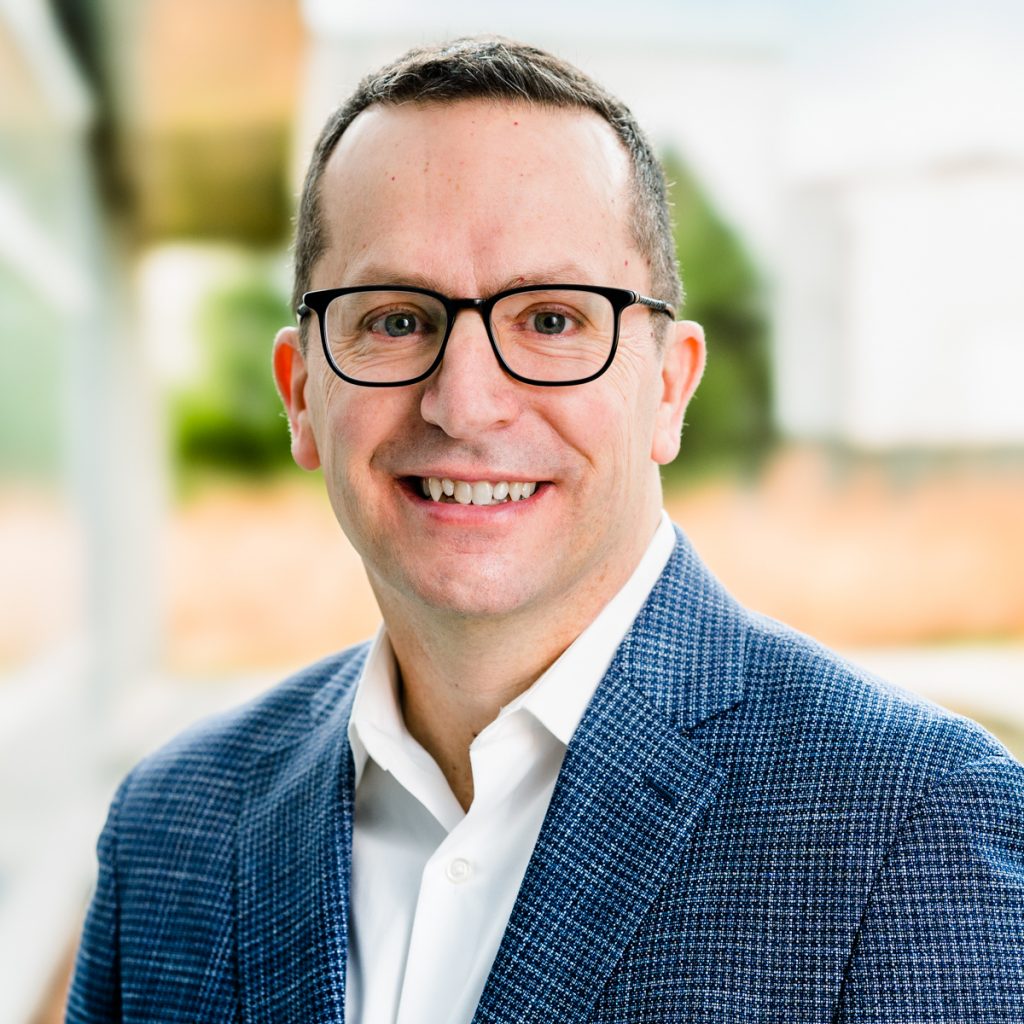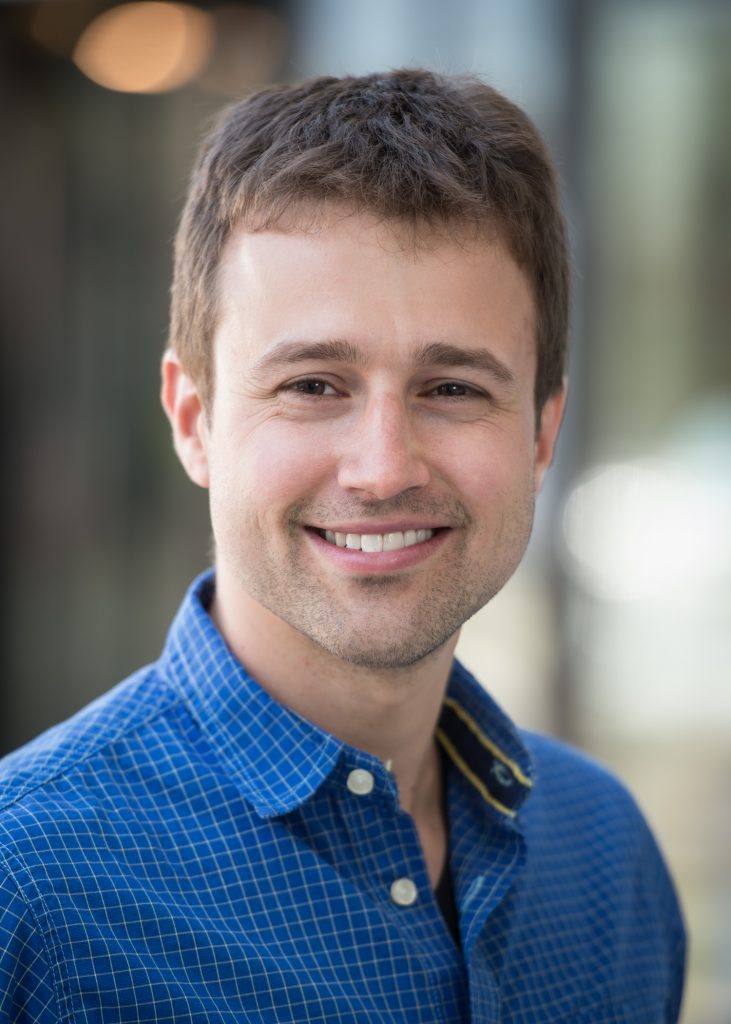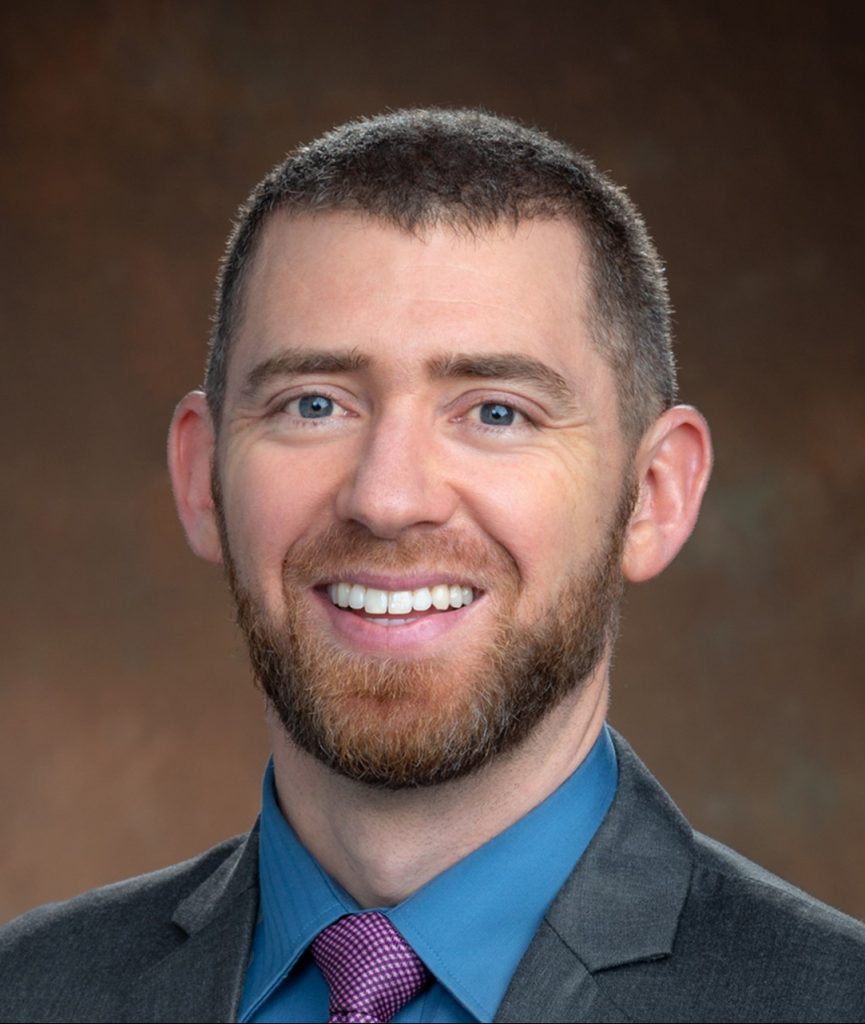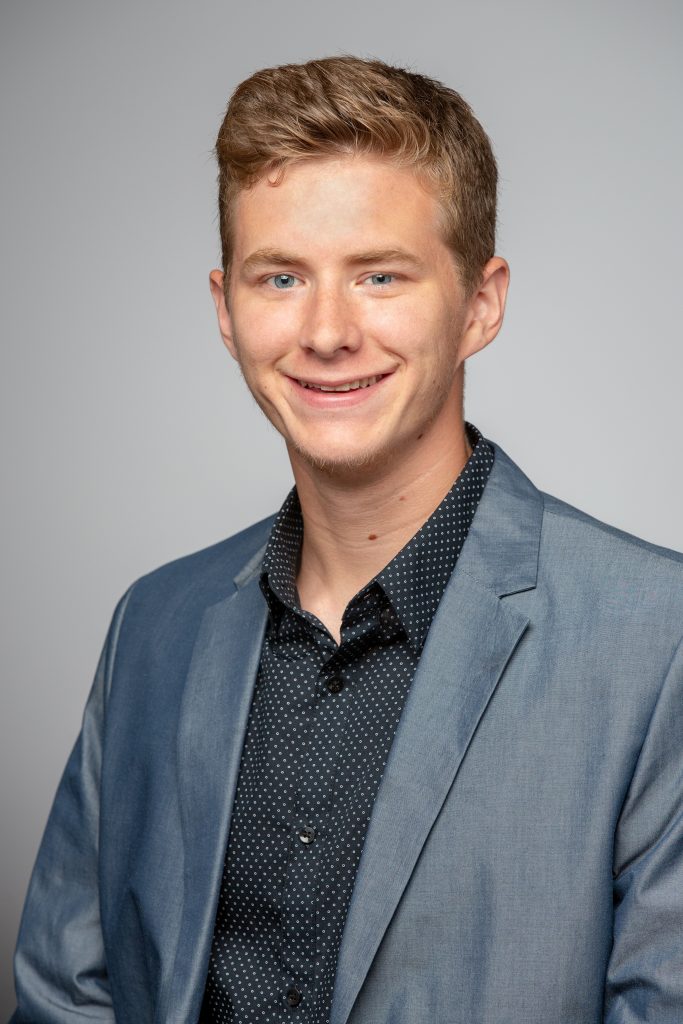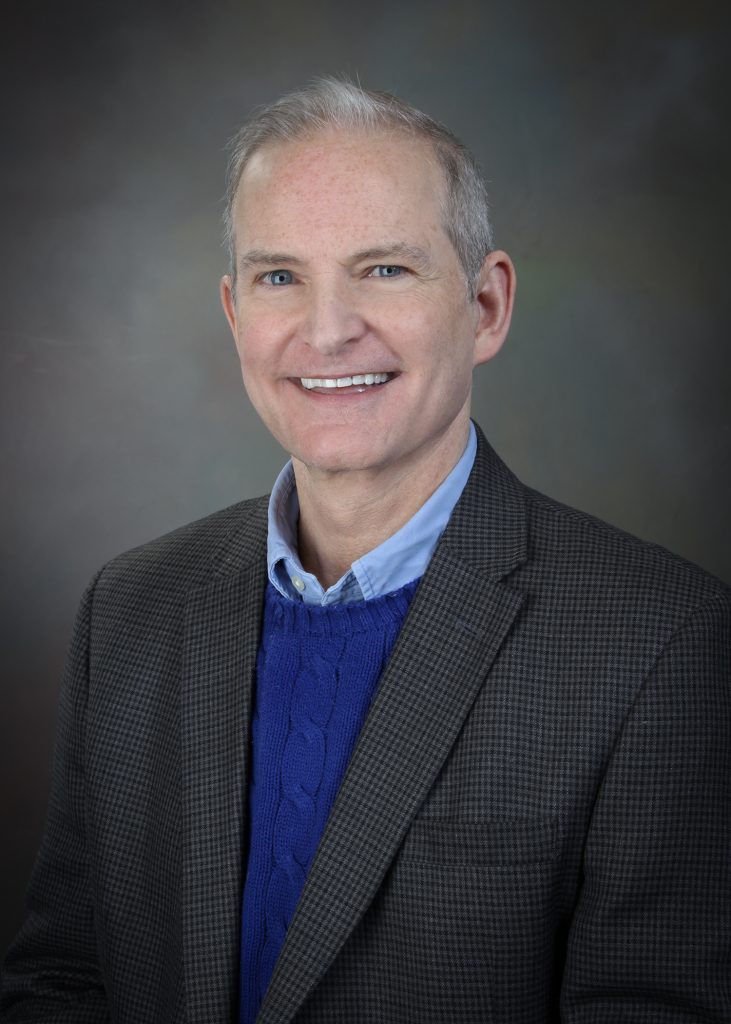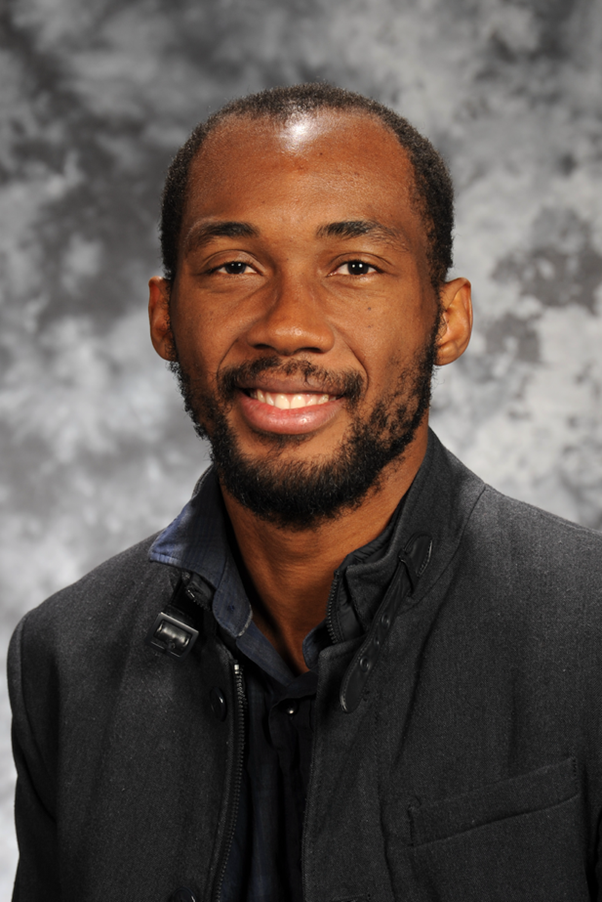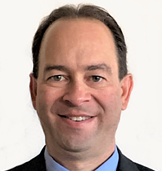
Tiger Teams
Purpose & Objectives
One of the most significant outcomes of the National Consortium will be a set of recommendations to frame multiple pathways to achieve LDES commercialization over the next decade. Commercialization refers to the steps that must be taken before technologies are successfully launched to affirm or redefine traditional approaches (i.e., pathways) addressing policies, financing, and investing, supply, production and distribution, marketing and sales, and customer support.
The purpose of the Customer Adoption Tiger Team is to assess the challenges and roadblocks that can negatively impact how customers in various markets can adopt, utilize, and benefit from LDES technologies.
The Customer Adoption Tiger Team will identify opportunities and barriers that drive or hinder the commercialization of LDES technologies as represented by the customer adoption of these technologies. Emphasis will be placed on opportunities and barriers that must be immediately addressed to enable a pathway for LDES commercialization within the next decade.
Monthly Meeting Schedule
The Customer Adoption Tiger Team will meet on the first Tuesday of the month from 11:00am to 12:00pm MT via Microsoft Teams.
For more information on how to join this Tiger Team, please contact Kailey Fascitelli.
2025 Action Plan
- How will / should an LDES customer be defined?
- How will AI and an increase in data centers re-define customer classes?
- How to estimate LDES cost data or operational assumptions?
- Which LDES services and benefits are most appropriate for utility operations?
- How to utilize LDES technologies in utility-scale versus distribution storage applications?
- How to develop enhanced knowledge sharing across utilities with similar operational profiles?
Leadership
Rebecca Barney – Laboratory Leader
National Renewable Energy Laboratory (NREL)
Dr. Rebecca Barney is a researcher in the Thermal Energy Systems Group at the National Renewable Energy Laboratory (NREL). She received her Ph.D. in Mechanical Engineering from University of California, Davis in 2021, and her M.S. in Mechanical Engineering in 2019. During these years she focused on simulation and analysis of supercritical water heat transfer and fluid dynamics for application to nuclear energy. Her research specialized in evaluating the unstable hydrodynamic flow through a channel flow to discover the heat transfer variations for energy cooling systems involving supercritical fluid flow. Prior to joining NREL she worked at MIT Lincoln Laboratory conducting research to aid design, modeling, and testing thermal systems and devices. She currently works on projects related to energy storage as well as geothermal district heating and cooling.
Kannan Tinnium – Industry Advisor
Schneider Electric
Purpose & Objectives
One of the most significant outcomes of the National Consortium will be a set of recommendations to frame multiple pathways to achieve LDES commercialization over the next decade. Commercialization refers to the steps that must be taken before technologies are successfully launched to affirm or redefine traditional approaches (i.e., pathways) addressing policies, financing and investing, supply, production and distribution, marketing and sales, and customer support.
The purpose of the Demonstrations and Deployments Tiger Team is to identify relevant scenarios where utility scale energy storage technologies can be demonstrated at pilot scale and for small commercial applications. The Demonstrations and Deployments team will work with industry stakeholders to identify the practical challenges that exist with the addition of energy storage to the existing grid infrastructure.
Monthly Meeting Schedule
The Demonstrations & Deployments Tiger Team will meet on the first Wednesday of the month from 3:00pm to 4:00pm MT via Microsoft Teams.
For more information on how to join this Tiger Team, please contact Kailey Fascitelli.
2025 Action Plan
- Develop Demonstrations & Deployment Project Tracking Database.
- Continue to ensure that operational LDES projects across the US are included in the Database.
- Develop a framework for the LDES project development process.
- Capture the current challenges in demonstration and deployment projects that can lead to project termination (and capture the success examples).
- Define LDES project operational profiles.
Leadership
Henk Laubscher – Laboratory Leader
Sandia National Laboratories (SNL)
Henk Laubscher is a creative mechanical engineer with a strong practical background and a passion for sustainability. His field of expertise is solar thermal energy and he holds a master’s degree in mechanical engineering (thermal energy storage) that he obtained at Stellenbosch University, South Africa in 2017. He has industry experience in the construction and commissioning of a 100 MW CSP parabolic trough plant, which provides him with the insights of large system integration. He is involved with many thermal energy storage related projects in his current role, supporting experimental testing for commercializing the technologies. Henk took part in the DOE funded Energy I-Corps program in 2021, focused on the business model development and commercialization of thermal energy storage to be integrated with retiring coal power plants. He enjoys working with a team of people and can seamlessly take the role of leader as well as team player. He joined Sandia National Laboratories in April of 2019 and is currently working at the National Solar Thermal Test Facility (NSTTF) in Albuquerque, NM.
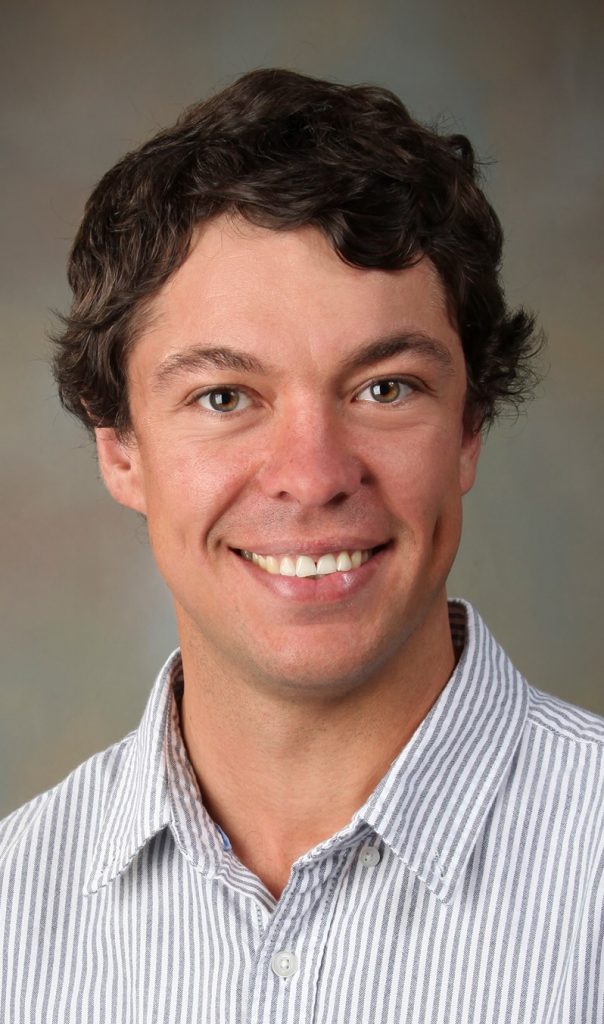
Dustin Highers – Industry Advisor
Chugach Electric Association, Inc.
Purpose & Objectives
One of the most significant outcomes of the National Consortium will be a set of recommendations to frame multiple pathways to achieve LDES commercialization over the next decade. Commercialization refers to the steps that must be taken before technologies are successfully launched to affirm or redefine traditional approaches (i.e., pathways) addressing policies, financing and investing, supply, production and distribution, marketing and sales, and customer support.
The purpose of the Economics and Valuation Tiger Team is to evaluate the methods, models, and tools for defining the costs and value of the services offered by LDES technologies, and the gaps that persist in defining, measuring, and monetizing the value of LDES from a system, societal, and operator perspective. The Tiger Team will work with industry to enhance the resource tool kit and to broadly disseminate those resources to industry participants.
Monthly Meeting Schedule
The Economics & Valuation Tiger Team will meet on the second Friday of each month from 12:30 pm to 1:30 pm MT via Microsoft Teams.
For more information on how to join this Tiger Team, please contact Kailey Fascitelli.
2025 Action Plan
- Identify potential new revenue streams for LDES.
- Identify new pathways to compensate stability/reliability services.
- Evaluate cost estimates for decarbonizing electricity grids in the United States.
- Evaluate alternative metrics for defining reliability and capacity standards.
- Evaluate alternative approaches to define the levelized cost of storage.
- Evaluate the social cost of carbon, and potential compensation metrics that can be applied to LDES.
Leadership
Patrick Balducci – Laboratory Leader
Argonne National Laboratories (ANL)
Patrick Balducci is the Manager of the Power Systems and Markets Research Group in the Center for Energy, Environmental, and Economic Systems Analysis at Argonne National Laboratory. At Argonne, he also serves as the Lab Relationship Manager over the U.S. Department of Energy (DOE) Renewable Power Programs and the DOE Office of Electricity Energy Storage Program. Prior to joining Argonne, Patrick served as a Chief Economist at the Pacific Northwest National Laboratory (PNNL) where he served for nearly 20 years. At PNNL, he led the energy storage analytics team where his research focused on storage valuation, integration, performance characterization, and control systems. Mr. Balducci has led research efforts evaluating the benefits of energy storage at 19 sites across the U.S. with combined power and energy capacities of 3.4 GW and 51 GWh, respectively, and leads efforts to enhance economic assessment tools for DOE. He holds a BS in Economics from Lewis and Clark College, where he graduated with honors, and an MSc in Applied Environmental Economics from the University of London, Imperial College of London.
Charles Rossman – Industry Advisor
LDES Council
Purpose & Objectives
One of the most significant outcomes of the National Consortium will be a set of recommendations to frame multiple pathways to achieve LDES commercialization over the next decade. Commercialization refers to the steps that must be taken before technologies are successfully launched to affirm or redefine traditional approaches (i.e., pathways) addressing policies, financing and investing, supply, production and distribution, marketing and sales, and customer support.
The purpose of the Electricity Market Design and Participation Team is to identify a set of opportunities and challenges for LDES technologies regarding their participation in both wholesale and retail electricity markets. In particular, the team will assess how potential changes to the following may impact the ability of these markets to capture the value that LDES resources can provide to the electricity system, and also ensure that LDES resources receive commensurate compensation for the services that they do provide. This will ultimately help to ensure that LDES resources are fully empowered to support affordable, reliable, resilient, and equitable operation and planning processes in future electricity systems.
- Wholesale market participation models to accommodate LDES.
- Wholesale market rules, e.g., market product definitions and market-clearing intervals.
- Market structure, e.g., roles and responsibilities and risk allocation.
- Aggregation models for distributed, behind-the-meter, resources.
- Retail rate structures and the availability of real-time or time-of-use pricing for resources that do not participate in wholesale markets.
Monthly Meeting Schedule
The Electricity Market Design and Participation Tiger Team will meet on the fourth Monday of every month from 1:00 to 2:00 pm MT via Microsoft Teams.
For more information on how to join this Tiger Team, please contact Kailey Fascitelli.
2025 Action Plan
- Develop a short guidance document that outlines LDES use cases and future scenarios that should be considered by valuation studies, for example:
- Supporting planned reductions in firm coal, gas, and nuclear capacity.
- Substituting LDES for flexible thermal peaking plants.
- Balancing VRE production.
- Evolving grid services and requirements.
- Supporting resilience and recovery during/from extreme weather events.
- Enhancing grid security.
- Supporting load growth (peak shaving, shifting profiles).
- Evaluate new methodologies and tools that consider multiday timescales, probabilistic resource availability, and uncertain future climate conditions must be developed and validated to facilitate LDES planning.
- Evaluate interconnection queue backlogs and processes are delaying implementation of new LDES resources and creating project uncertainty.
Leadership
Todd Levin – Laboratory Leader
Argonne National Laboratory (ANL)
Dr. Todd Levin is the Electricity Markets Team Lead in the Center for Energy, Environmental and Economic Systems Analysis at Argonne National Laboratory. His research interests focus on utilizing advanced optimization and simulation methodologies to model complex interactions in electricity markets and quantify the implications of domestic energy policies and regulations. He also maintains a strong interest in international energy development, examining optimal centralized and decentralized electrification strategies as well as a range of global energy security issues. Dr. Levin holds a B.A. in Physics from Northwestern University and a Ph.D. in Industrial Engineering from the Georgia Institute of Technology.
Gabe Murtaugh – Industry Advisor
LDES Council
Gabe Murtaugh is the director of markets and technology for the LDES Council and focuses on market changes that accelerate pathways for decarbonization accompanied by deployment of long duration energy storage technologies. Gabe is active in the storage community and holds a number of advisory positions for international decarbonization efforts and marquee storage conference events. Gabe has more than 10 years of experience working for grid operators, designing markets for storage participation and monitoring markets.
Purpose & Objectives
One of the most significant outcomes of the National Consortium will be a set of recommendations to frame multiple pathways to achieve LDES commercialization over the next decade. Commercialization refers to the steps that must be taken before technologies are successfully launched to affirm or redefine traditional approaches (i.e., pathways) addressing policies, financing and investing, supply, production and distribution, marketing and sales, and customer support.
The purpose of the Grid Infrastructure Tiger Team is to assess the challenges and roadblocks that can negatively impact deployment of LDES technologies due to lack of understanding of the system upgrades required to support interconnection and optimal utilization.
Monthly Meeting Schedule
The Grid Infrastructure Tiger Team will meet on the third Friday of each month from 1:30 pm to 2:30 pm MT via Microsoft Teams.
For more information on how to join this Tiger Team, please contact Kailey Fascitelli.
2025 Action Plan
- Evaluate locational grid infrastructure implications /constraints /needs associated with different LDES storage technologies.
- Obtain consensus on established metrics that reflect grid constraints.
- Obtain consensus on relevant grid enhancement needs.
- Identify grid constraints and enhancement needs, that are obstructing commercialization of an LDES tech. Complete such categorization for all LDES technologies.
- Evaluate challenges associated with siting an LDES system in a limited space.
- Identify methods to support the transition from low TRL laboratory prototype to high TRL deployable solution.
Leadership
Shafiul Alam – Laboratory Leader
Idaho National Laboratories (INL)
Shafiul is a research scientist in the Power & Energy Systems Group of INL’s Energy & Environment Science & Technology Directorate. Shafiul has 10+ years of experience in steady state and dynamic analysis with high impact disseminations for power system integration, control, and operations. Shafiul served as the Technical Lead of 1) planning, and execution of energy storage hardware-in-the-loop simulation, 2) onsite deployment of micro phasor measurement unit (PMU) and data management for the preparation of energy storage supported small hydropower plant black start field demonstration. He previously worked on the power and communication hardware-in-the-loop testbed as part of the “Opportunistic Hybrid Communications Systems for Distributed PV Coordination” project. He also served as the Principal Investigator for the laboratory directed research and development (LDRD) project “High Performance Computing-based Dynamically Adaptive Protection Schemes for Electric Grid” that built the high performance real-time co-simulation platform and developed several transmission switching based blackout mitigation heuristics. Shafiul also served as a member of the IEEE PES 2023 award winning Distributed Energy Resources Management Systems (DERMS) Functional Specification working group that developed the 2021 Draft Gide IEEE 2030:11.
Shafiul is currently co-leading U.S. Department of Energy’s a) WPTO funded project “Hydro + Storage: Accelerating Industry Deployment of Hydropower Hybrids”, and b) WETO funded project “Wind Power as a Real Synchronous Generation (WindSG)”. Shafiul is also serving as a member of 1) IEEE P2030.14: Guide for Virtual Power Plant Functional Specification for Alternate and Multi-Source Generation, and 2) IEEE P2004: Hardware-in-the-Loop (HIL) Simulation Based Testing of Electric Power Apparatus and Controls working groups.
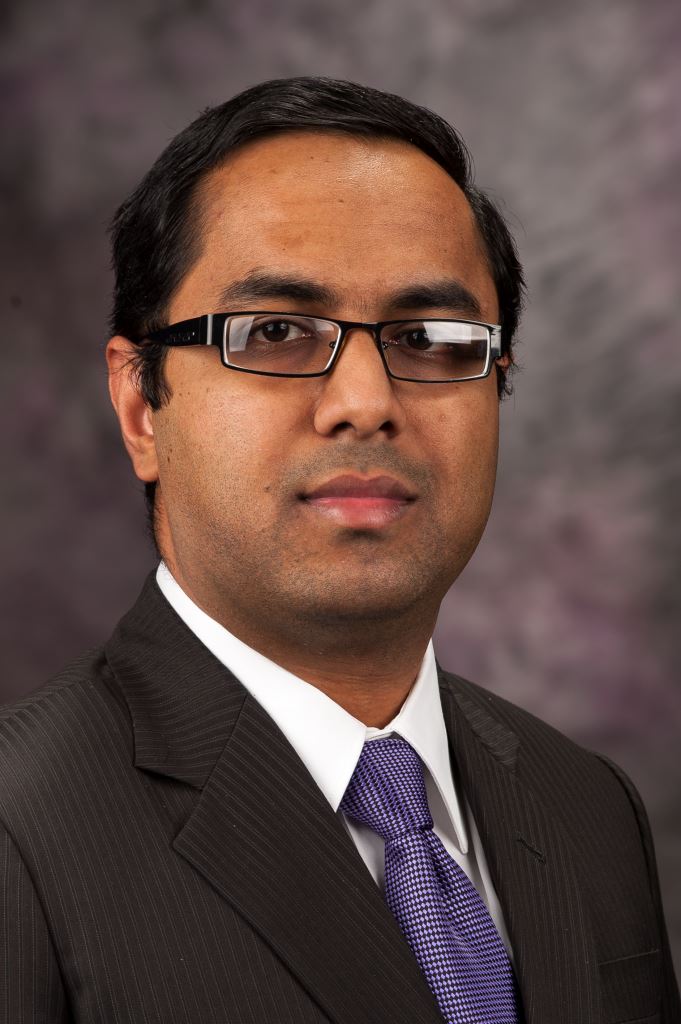
Scott Munns – Industry Advisor
Trane Technologies
Purpose & Objectives
One of the most significant outcomes of the National Consortium will be a set of recommendations to frame multiple pathways to achieve LDES commercialization over the next decade. Commercialization refers to the steps that must be taken before technologies are successfully launched to affirm or redefine traditional approaches (i.e., pathways) addressing policies, financing and investing, supply, production and distribution, marketing and sales, and customer support.
The purpose of the Investor Confidence / Financing Tiger Team is to 1) assess the opportunities and challenges to increased public and private investment in LDES technologies, particularly for commercial-scale demonstration and deployment projects; and 2) to create and disseminate recommendations to increase confidence and reduce risk perceptions for LDES technologies among investment communities.
Monthly Meeting Schedule
The Investor Confidence & Planning Tiger Team will meet on the fourth Tuesday of each month from 12:00 pm to 1:00 pm MT via Microsoft Teams.
For more information on how to join this Tiger Team, please contact Kailey Fascitelli.
2025 Action Plan
- Develop, and make publicly available, a public repository of targeted investment data of LDES investments through public databases and reports, which will enable LDES cost reductions by segment and help LDES companies find private capital for early growth stages.
- Develop summary guidance and documentation based on existing, publicly available funding data such as through tax credits and grants (i.e., public, state and federal) and through private investments that have been made public through news outlets or similar.
- Recommend how LDES project financing costs can be decreased through lowering risk factors, increasing reliability and investor certainty, and appropriately correlating private investments with technology-readiness levels.
- Evaluate new, innovative funding mechanisms and markets that can be developed to finance LDES technologies (e.g., Clean Transition Tariff).
Leadership
Jeffrey Gifford – Laboratory Leader
National Renewable Energy Laboratory (NREL)
Jeffrey Gifford is a postdoctoral researcher at the National Renewable Energy Laboratory after completing his Ph.D. in the multi-disciplinary Advanced Energy Systems program at the Colorado School of Mines in May 2023; he has worked at NREL since 2018. His dissertation research answered key questions about long-duration, particle-based thermal energy storage systems using a multi-method approach, including computational fluid dynamics, dynamic integrated system modeling, and mixed-integer linear programming for design and dispatch optimization. His overall research interest is energy storage systems for economy-wide decarbonization but mainly focuses on component, system, and techno-economic modeling of particle-based thermal energy storage for industrial heat and grid electricity applications. He has also worked on modeling hydrogen electrolysis and leakage – another leading long-duration energy storage technology. Through his work, he has spent time researching questions focusing on long-duration energy storage value to and integration into the grid, including through the replacement of fossil fuel-based generation, and long-duration energy storage market and adoption opportunities, including industrial decarbonization and cooperate sustainability goals.
Todd Q. Adams – Industry Advisor
Visibility Marketing, Inc
Todd Q. Adams is a seasoned clean energy and grid modernization advisor with over 25 years of experience. He served on the 2024 LDES National Consortium Industry Leadership team and is the owner of Visibility Marketing Inc., specializing in advisory services for electric utilities. Adams focuses on strategic economic investments that benefit both communities and the environment.
Recently, Adams played a key role in securing $130 million in U.S. Department of Energy grants for LDES, wind, and solar projects. He also provides guidance to Climate Tech startups, helping them access private capital across asset classes and non-dilutive funding. His commitment extends to collaborating with Tribal Nations and rural communities, advancing LDES commercialization and technology while supporting marginalized groups.
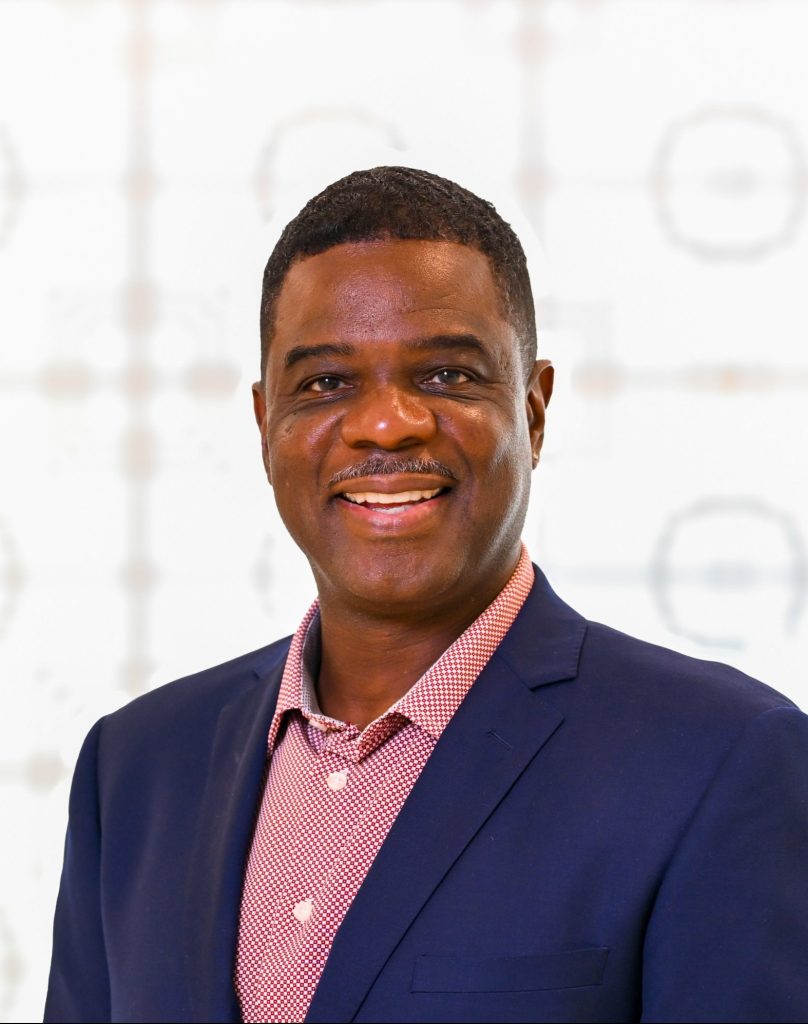
Purpose & Objectives
One of the most significant outcomes of the National Consortium will be a set of recommendations to frame multiple pathways to achieve LDES commercialization over the next decade. Commercialization refers to the steps that must be taken before technologies are successfully launched to affirm or redefine traditional approaches (i.e., pathways) addressing policies, financing and investing, supply, production and distribution, marketing and sales, and customer support. The purpose of the Policy & Regulations Team is to assemble key participants across the Teaming Partners who have an interest and perspective on US policies to develop actionable recommendations that can be provided to both state and federal entities to address key market drivers such as how LDES can be utilized to solve a grid problems, how LDES can be utilized to support a safe and reliable grid, and how LDES technologies can be fairly compensated in both wholesale and retail transactions to recognize the value they bring to the US power sector.
Monthly Meeting Schedule
The Policy & Regulations Tiger Team will meet on the third Friday of each month from 11:00 am to 12:00 pm MT via Microsoft Teams.
For more information on how to join this Tiger Team, please contact Kailey Fascitelli.
2025 Action Plan
- Assess the opportunities for increased levels of LDES demonstrations / pilot programs in specific states to facilitate the scaling of LDES technologies, which in turn will promote cost reductions.
- Assess the extent to which standardized methods to determine the capacity value of all generation and storage resources, including LDES, can be adopted across all US RTOs/ISOs.
- Evaluate interconnection queue issues in both retail and wholesale markets that can be addressed through policy and regulatory reform.
- Complete Wholesale & Retail Geographical Market Assessments.
- Complete Barriers Assessment Document (public report).
- Compile/develop LDES policy recommendations for states and distribute a guidance document to state PUCs that includes input from industry representatives regarding regulatory enablers specific to LDES that should be considered.
Leadership
Will McNamara – Laboratory Leader
Sandia National Laboratories (SNL)
Will McNamara is the Principal Investigator for the Long Duration Energy Storage (LDES) National Consortium, representing Sandia National Laboratories as the lead lab for this effort. He also leads the Policy & Regulations Tiger Team for the National Consortium.
Will serves as Grid Energy Storage Policy Analyst for Sandia National Laboratories with a focus on energy storage policy development at the federal and state levels. Will has spent his entire 30-year career in the energy and utilities industry with a concentration on regulatory and legislative policy. He has served as a lobbyist in California and has represented major utilities across the U.S. in numerous jurisdictions in proceedings pertaining to integrated resource planning, procurement, cost recovery, rate design, and the development of policymaking best practices. Will’s areas of subject matter expertise, in addition to LDES policy, include distributed energy resources, AMI/smart grid, renewables, and competitive retail markets.
Susan Chamberlin – Industry Advisor
Maine Governor’s Office, Office of the Public Advocate
Purpose & Objectives
One of the most significant outcomes of the National Consortium will be a set of recommendations to frame multiple pathways to achieve LDES commercialization over the next decade. Commercialization refers to the steps that must be taken before technologies are successfully launched to affirm or redefine traditional approaches (i.e., pathways) addressing policies, financing and investing, supply, production and distribution, marketing and sales, and customer support.
The purpose of the Reliability and Resilience Team is to explore several key challenges in defining and evaluating the benefits of LDES investments on grid stability and to evaluate the methods and models used to quantify these impacts and assigning value to them. The Reliability and Resilience team will explore current approaches used to account for reliability/resilience objectives in the grid investment planning process.
This Tiger Team will review studies focused on defining and measuring reliability and resilience metrics. The team will explore research defining approaches for monetizing reliability/resilience contributions from grid investments and compensating resource owners. In addition, this Tiger Team will work with industry to enhance the resource tool kit and to broadly disseminate those resources to industry participants.
Monthly Meeting Schedule
The Reliability & Resilience Tiger Team will meet on the first Tuesday of each month from 1:00 pm to 2:00 pm MT via Microsoft Teams.
For more information on how to join this Tiger Team, please contact Kailey Fascitelli.
2025 Action Plan
- Conduct further analysis to determine the potential for creating a “value of resilience” standard that can be offered to state regulators.
- Evaluate alternatives to the Effective Load Carrying Capability (ELCC) metric as a means of evaluating the contributions that LDES can made toward resource adequacy requirements.
- Conduct further analysis on potential revenue streams for LDES such as capacity accreditation for durations beyond 4 hours and reliability attributes (e.g., voltage support, synchronous inertia).
Leadership
Patrick Balducci – Laboratory Leader
Argonne National Laboratories (ANL)
Patrick Balducci is the Manager of the Power Systems and Markets Research Group in the Center for Energy, Environmental, and Economic Systems Analysis at Argonne National Laboratory. At Argonne, he also serves as the Lab Relationship Manager over the U.S. Department of Energy (DOE) Renewable Power Programs and the DOE Office of Electricity Energy Storage Program. Prior to joining Argonne, Patrick served as a Chief Economist at the Pacific Northwest National Laboratory (PNNL) where he served for nearly 20 years. At PNNL, he led the energy storage analytics team where his research focused on storage valuation, integration, performance characterization, and control systems. Mr. Balducci has led research efforts evaluating the benefits of energy storage at 19 sites across the U.S. with combined power and energy capacities of 3.4 GW and 51 GWh, respectively, and leads efforts to enhance economic assessment tools for DOE. He holds a BS in Economics from Lewis and Clark College, where he graduated with honors, and an MSc in Applied Environmental Economics from the University of London, Imperial College of London.
Eric Ruffel – Industry Advisor
CLP Engineering
Purpose & Objectives
One of the most significant outcomes of the National Consortium will be a set of recommendations to frame multiple pathways to achieve Long Duration Energy Storage (LDES) commercialization over the next decade. Commercialization refers to the steps that must be taken before technologies are successfully launched to affirm or redefine traditional approaches (i.e., pathways) addressing policies, financing and investing, supply, production and distribution, marketing and sales, and customer support.
The purpose of the Safety & Grid Security Tiger Team is to identify, develop, apply or adapt safety and security guidelines and standards for the deployment and utilization of LDES in the grid of the future.
Monthly Meeting Schedule
TBD
For more information on how to join this Tiger Team, please contact Kailey Fascitelli.
2025 Action Plan
- Evaluate the safety of each LDES type or category. There are apparent gaps in the safety testing, etc., in emerging LDES technologies and unique battery chemistries and thermal energy storage, creating an industry need for a framework and language to enable discussions and comparisons.
- Assess the need to update the codes and standards (NFPA 855, NEC70, IFC, etc.) to consider different types of LDES technologies.
- Develop comprehensive guidelines for communities on the hazards associated with emerging LDES technologies.
- Conduct a Life-cycle assessment would help in understanding the environmental impact and guide the development of safe handling and disposal practices for LDES technologies.
- Develop comprehensive data risk management strategies regarding the cybersecurity of LDES technologies.
Leadership
Venkat Durvasulu – Laboratory Leader
Idaho National Laboratory (INL)
Venkat Durvasulu is a researcher at Idaho National Laboratory, specializing in energy systems and market models. With extensive research experience in developing innovative solutions for electricity market challenges, Venkat has contributed to various high-impact reports and publications. He has conducted techno-economic analyses for a wide range of systems, including carbon-capture systems and renewable-battery hybrid systems. Venkat is one of the key contributors to the DOE’s Storage Innovations-2030 initiative, for which he has authored technology assessment reports on multiple energy storage technologies. Dr. Durvasulu holds a Ph.D. in Electrical Engineering from South Dakota State University, and B.E. and M.E. from Osmania University, India and is passionate about advancing sustainable energy technologies.
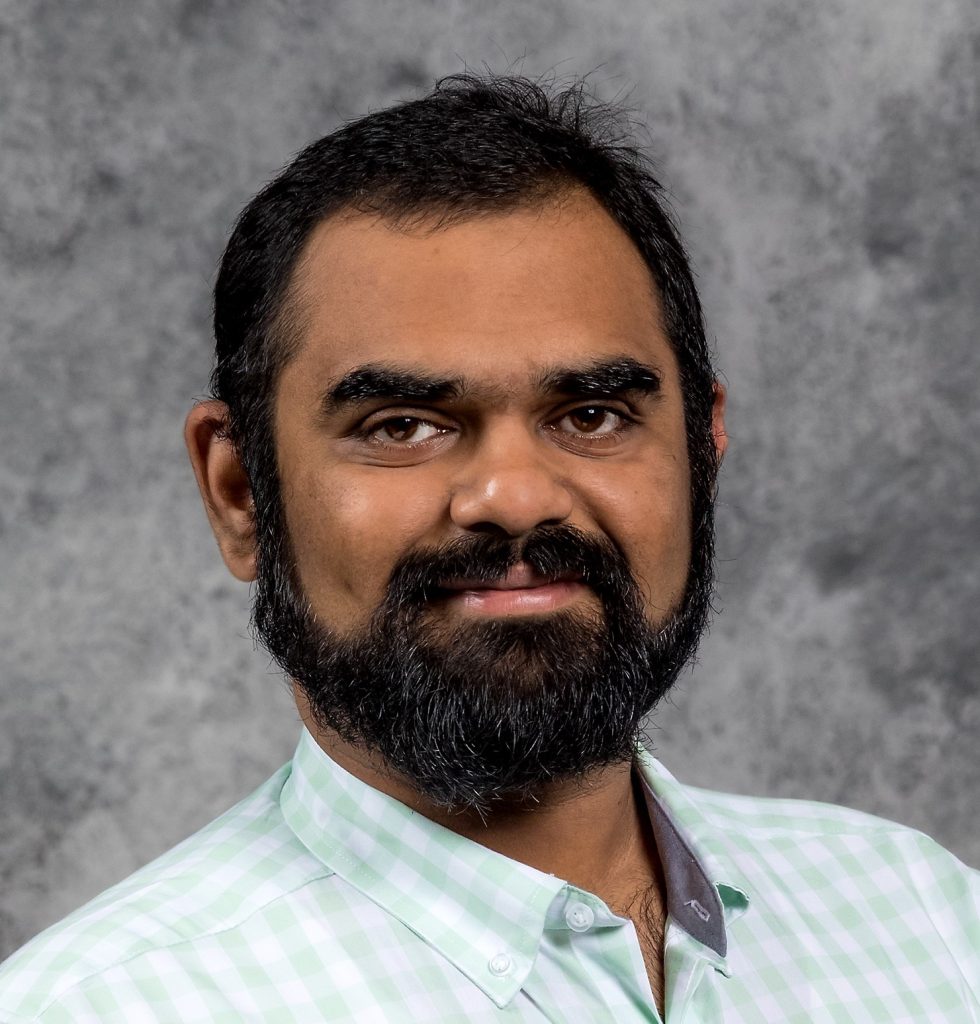
Kieran Claffey – Industry Advisor
Southern Company Services
Kieran J. Claffey is a mechanical engineer with 27 years of experience, ranging from advanced lithium-ion battery research, solid state batteries, energy storage, fuel cells, heat pumps, semiconductors and medical devices. He has spent majority of his career in research and development (R&D) and consultancy, and is a recognized subject matter expert in energy storage.
Kieran currently serves as senior research engineer, within enery storage and end-use group, in the Southern Company R&D organization. His main areas of focus includes lithium-ion batteries, battery safety, and technology scouting for energy storage systems. He is responsible for the development of medium- and long-duration energy storage for Southern Company. He also leads projects related to lithium-ion battery safety for the utility industry.
Kieran previously worked with Georgia Power in the energy efficiency group. Before joining Southern Company, he worked as a consultant in the oil and gas industry and as a research engineer in a lithium-ion battery start-up.
Kieran holds a first class honors bachelor’s degree in mechanical engineering from the University of Limerick, Ireland, is a registered P.E with machine design background and a “Certified Energy Manager”.
Purpose & Objectives
One of the most significant outcomes of the National Consortium will be a set of recommendations to frame multiple pathways to achieve Long Duration Energy Storage (LDES) commercialization over the next decade. Commercialization refers to the steps that must be taken before technologies are successfully launched to affirm or redefine traditional approaches (i.e., pathways) addressing policies, financing and investing, supply, production and distribution, marketing and sales, and customer support.
The purpose of the Supply Chain & Manufacturing Efficiencies Tiger Team is to assess the supply chain and manufacturing challenges and roadblocks that can negatively impact the deployment and utilization of the LDES technologies in future.
Monthly Meeting Schedule
The Supply Chain & Manufacturing Efficiencies Tiger Team will meet on the last Wednesday of each month from 2:00 pm to 3:00 pm MT via Microsoft Teams.
For more information on how to join this Tiger Team, please contact Kailey Fascitelli.
2025 Action Plan
- Work of the Team will continue to be focused on LDES supply chain challenges, LDES material supply chain, and LDES workforce needs.
- Investigate regional/national distribution of supply chain/manufacturing/etc. and how that relates to labor supply.
- Develop a public database containing information about material-supplying countries and the capacities of each supplier within those countries.
- Calculate the necessary materials / equipment to install 1 GWh of energy storage for various LDES technologies.
- Explore/identify state/federal policies and strategies that encourage manufacturing/ the production of critical components to reduce reliance on imports.
Leadership
Lionel Toba – Laboratory Leader
Idaho National Laboratory (INL)
Lionel Toba is a Systems Scientist at the Idaho National Laboratory (INL), where he leads the Market and Supply Chain Analysis team. Funded by the Critical Materials Innovation hub, his project studies new technology impacts on global and domestic critical material supply chains. He was part of the teams investigating (1) bottlenecks and challenges in the large power transformers and high voltage direct current transmission supply chains in response to Executive Order 14017 on America’s Supply Chain, and (2) supply risk and importance to clean energy of material in the critical material assessment.
Lionel holds a PhD in Engineering Management and Systems Engineering from Old Dominion University. His research is at the intersection of Modeling & Simulation and Data Science to support decision making. He builds data-driven models, web-based tools, and uses statistical analysis techniques and AI to address issues in supply chain, critical infrastructure systems and complex systems behaviors.
Brian Berland – Industry Advisor
Storion Energy
Dr. Brian Berland currently serves as the Senior Director, Business Development at Storion Energy. He has spent the last 25 years developing and commercializing energy technologies with a focus on batteries and energy storage systems. During this time, he has held several leadership roles including directing Corporate R&D and Product Development with a focus on solving business and technical challenges to transition technology from initial invention and feasibility demonstration through the transition into commercialization. He has been a leader in the vanadium redox flow battery industry since 2010 with activities ranging from new materials development, novel system architectures, and deployment of grid-tied field demonstration systems. He graduated with a Ph.D. in chemistry from the University of Colorado. Currently he serves as an active member of Battery Council International’s Flow Battery Industry Group, the International Electrotechnic Committee’s Joint Working Group 7 (developing industry standards for flow batteries), as well as serving on the supply chain and manufacturing efficiency tiger team for the Long Duration Energy Storage National Consortium.
Purpose & Objectives
The Technology Development, Evaluation, and Testing Tiger Team, operating within the Long-Duration Energy Storage National Consortium, is dedicated to laying the groundwork for excellence in the development, evaluation, and testing of long-duration energy storage technologies. The mission of this Tiger Team is to establish comprehensive testing & performance optimization protocols, rigorous safety standards, robust collaboration programs, and accessible deployment readiness support that empowers industry to excel in enhancing the reliability, performance, and safety of energy storage systems.
Competitive Factor Matrix
For a thorough break down of the Competitive Factors and their definitions, click here.
Monthly Meeting Schedule
The Technology Development, Evaluation & Testing Tiger Team will meet on the last Monday of each month from 1:30 pm to 2:30 pm MT via Microsoft Teams.
For more information on how to join this Tiger Team, please contact Kailey Fascitelli.
2025 Action Plan
- Continue to develop and make publicly available a competitive factor matrix address what is currently an industry gap of data that is needed to evaluate the full range of LDES technologies against primary competitive factors.
- Define LDES Sub-Categories: Establish clear definitions for LDES sub-classifications based on attributes and grid services provided.
- Conduct further analysis to evaluate the driver of LDES costs—power or energy—and the various elements of the levelized cost of storage (LCOS) that can be targeted for reductions.
- Prepare list of factors that influence roundtrip efficiencies organized by technology type and assumptions regarding how these factors can be influenced, and by which industry players.
- Conduct an RTE assessment based on LDES technology type.
Leadership
Luke McLaughlin – Laboratory Leader
Sandia National Laboratories (SNL)
Dr. Luke McLaughlin, a Mechanical Engineer specializing in R&D at Sandia National Laboratories, is an expert in the fields of thermal energy storage and concentrating solar power. Luke leads several DOE thermal energy storage projects, including a key project featuring a 6 MWh x 100 kWe Long Duration Energy Storage (LDES) demonstration using moving particle thermal energy storage technology. Additionally, Luke played a pivotal role as a technical lead for the DOE Storage Innovations Flight Paths Report and currently leads the Development, Evaluation, and Testing Tiger Team within the Long Duration Energy Storage National Consortium. He earned his M.S and Ph.D. in Mechanical Engineering from the University of Wyoming in 2019 and 2022, respectively.
Cynthia Cannady – Industry Advisor
Pasadena 100
Purpose & Objectives
One of the most significant outcomes of the National Consortium will be a set of recommendations to frame multiple pathways to achieve LDES commercialization over the next decade. Commercialization refers to the steps that must be taken before technologies are successfully launched to affirm or redefine traditional approaches (i.e., pathways) addressing policies, financing and investing, supply, production and distribution, marketing and sales, and customer support.
The purpose of the Use Case Development Tiger Team is to define utility needs for LDES and performance criteria (Technology-specific and technology-agnostic) and assess LDES landscape and likely timing of commercialization.
Monthly Meeting Schedule
The Use Case Development Tiger Team will meet on the first Tuesday of each month from 11:00 am to 12:00 pm MT via Microsoft Teams.
For more information on how to join this Tiger Team, please contact Kailey Fascitelli.
2025 Action Plan
- This Team will continue to determine specific actions that National Consortium can take to support electric utilities (including investor-owned, public/municipal, and electric cooperative utilities) in the actual implementation of developed recommendations.
- These needs may include but are not limited to:
- How to estimate LDES cost data or operational assumptions;
- Which LDES services and benefits are most appropriate for utility operations, utilization of utility-scale versus distributed energy storage within utility operations; and
- Enhanced knowledge sharing across utilities with similar operational profiles.
- Ways to increase utility and regulatory recognition of need for longer duration, firm, dispatchable power will improve the competitive position of LDES in this use case.
- Develop recommendations related to Planning and permitting, ownership of the storage assets, and LDES revenue or payment plans for return on investment.
Leadership
Zhiwen Ma – Laboratory Leader
National Renewable Energy Laboratory (NREL)
Dr. Zhiwen Ma is a senior engineer in the Thermal Sciences R&D Group at National Renewable Energy Laboratory (NREL). He received his Ph.D. in Mechanical Engineering from Georgia Institute of Technology (2000) and a M.S.M.E. degree from the University of Akron (1996). He was Test and Modeling Engineer at FuelCell Energy for six years since 2001 and worked at General Electric (GE) Aviation before joining NREL in 2009. His research focuses on particle thermal energy storage (TES), hydrogen production, and concentrating solar thermal power. Zhiwen is leading the research projects on long duration energy storage (LDES) using particle-based thermal energy storage, thermal and electrochemical modeling for electrolysis technology development, and solar fuel production. His research works on energy storage, solar receiver, advanced supercritical carbon dioxide power cycle, thermal and electrochemical modeling have been applied in Generation 3 concentrating solar power, solar fuel and hydrogen production. He has expertise in modeling and testing of particle TES, renewable solution and system development, component performance and cost analysis. He served as an associated editor for Frontier in Energy Research, has published over 80 papers, numerous technical reports, two book chapters, and was awarded fourteen patents.
John DeLappe – Industry Advisor
ExoWatt
John M. DeLappe joined Exowatt in October 2023 as the company’s first full-time hire and Chief of Staff, helping scale the organization from stealth to a growth-stage clean energy technology company. Working closely with the CEO and executive team, he has led company-wide coordination, strategic alignment, and execution across departments and later focused on commercial functions as Exowatt delivered its first pilot and built a project backlog exceeding 90 GWh.
Entrepreneurial and curious by nature, John has a background in energy strategy, utility planning, and infrastructure development, with a focus on advancing technologies that accelerate the clean energy transition. As Exowatt’s commercial business expanded, his role grew to span the full sales and commercialization process—from market research and customer discovery to structuring partnerships, shaping product-market fit, and building go-to-market strategies.
He holds a B.S. in Business Administration and Sustainable Energy from Boston University and is driven by curiosity about what will be built next.
Joe Spease – Industry Advisor
Windsohy
Joe Spease is CEO of WindSoHy, LLC a company developing wind, energy storage and green hydrogen projects. Prior to establishing his own company he was president of Pristine Power. At Pristine Power he worked to develop wind, solar and hydrogen projects.
He served on an energy storage task force in 2021 for the Federal Energy Regulatory Commission’s SPP RTO/ISO to provide advice on how to integrate energy storage projects into the grid. He also works on the Department of Energy’s Energy Storage Safety Working Group writing the safety guidelines for all energy storage technologies. He currently serves on the DOE “Tiger Teams” to break down barriers to development of projects with Long Duration Energy Storage (LDES). He also serves on the DOE hydrogen task force called CHyTAC.
He serves on the DOE US-India-IESA Energy Storage Partnership to advance energy storage project development in India. He was part of the inaugural DOE/Commerce Department Net Zero World conference in December 2022. He is an advisor to the Australia Hydrogen Conference to held in Melbourne in November 2024. The Commerce Department sponsored his recent two-week Trade Mission to China to promote CAES/green H2 technology. WindSoHy is working on two project development proposals in China with the China CEIC energy investment committee and the China Energy Storage Alliance.
WindSoHy hydrogen project development now focuses on the use of hydrogen combustion chambers in the CAES process; hydrogen power plant development to replace natural gas power plants; use of non-PGM electrolyzers like Anion Exchange Membrane electrolyzers to avoid supply chain and price problems; development of low-price carbon fiber cylinders for pressurized hydrogen storage on vehicles; development of cost-effective above ground storage of hydrogen; development of low-price compressors for hydrogen projects; and use of low-price wind power at night for powering electrolyzers.
WindSoHy is committed to the green hydrogen and zero carbon LDES technologies needed to get to Net Zero emissions affordably.
Purpose & Objectives
One of the most significant outcomes of the National Consortium will be a set of recommendations to frame multiple pathways to achieve LDES commercialization over the next decade. Commercialization refers to the steps that must be taken before technologies are successfully launched to affirm or redefine traditional approaches (i.e., pathways) addressing policies, financing and investing, supply, production and distribution, marketing and sales, and customer support.
The purpose of the Utility Resource Planning Tiger Team is to identify the barriers to LDES in utility planning processes, develop and compile tools and practices that address those barriers, and then broadly disseminate those resources to industry participants.
Monthly Meeting Schedule
The Utility Resource Planning Tiger Team will meet on the third Thursday of each month from 11:00 am to 12:00 pm MT via Microsoft Teams.
For more information on how to join this Tiger Team, please contact Kailey Fascitelli.
2025 Action Plan
- This Team will continue to determine specific actions that National Consortium can take to support electric utilities (including investor-owned, public/municipal, and electric cooperative utilities) in the actual implementation of developed recommendations.
- These needs may include but are not limited to:
- How to estimate LDES cost data or operational assumptions;
- Which LDES services and benefits are most appropriate for utility operations, utilization of utility-scale versus distributed energy storage within utility operations; and
- Enhanced knowledge sharing across utilities with similar operational profiles.
- Ways to increase utility and regulatory recognition of need for longer duration, firm, dispatchable power will improve the competitive position of LDES in this use case.
- Develop recommendations related to Planning and permitting, ownership of the storage assets, and LDES revenue or payment plans for return on investment.
Leadership
Jeremy Twitchell – Laboratory Leader
Pacific Northwest National Laboratory (PNNL)
Jeremy Twitchell is a senior energy analyst at the Pacific Northwest National Laboratory, where he leads PNNL’s work on the Equitable Regulatory Environment thrust area of the Department of Energy – Office of Electricity’s Energy Storage Program. His research focuses on identifying the regulatory barriers that impede the deployment of energy storage technologies and best practices for reducing or eliminating those barriers, as well as providing technical assistance to states on energy storage-related topics. He also supports other efforts at the lab in areas related to grid planning, utility regulation, rate design, and energy system equity. Prior to joining PNNL, Jeremy spent five years at the Washington Utilities and Transportation Commission.

